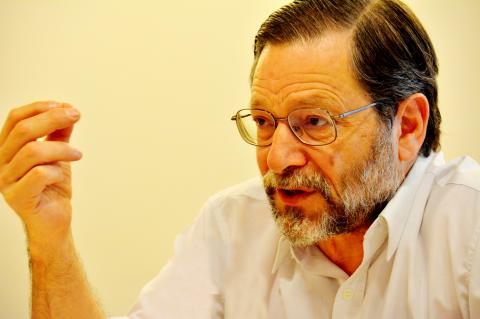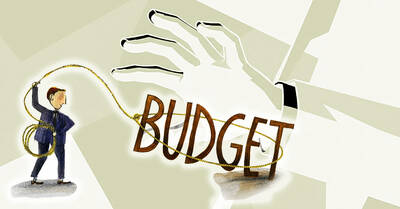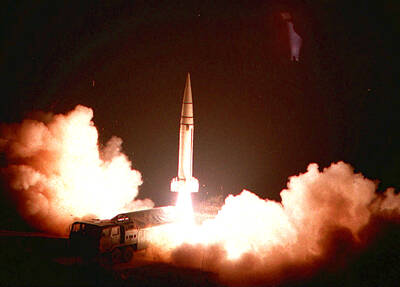Fresh from months lecturing across Europe and North America, Taiwan hand Bruce Jacobs, professor of Asian languages and cultures at Monash University in Melbourne, argued in Taipei last week that size doesn’t matter — or to be more precise, that Taiwan isn’t, despite the popular view, “small.” As he sees it, the realization that Taiwan is in fact a “middle power” could have implications not only for how we look at Taiwan, but perhaps more importantly, for its ability to forge a path for itself.
With Typhoon Soulik homing in on Thursday, its structure more than twice the size of Taiwan proper, it was easy to think that Jacobs had perhaps lost all sense of proportion after traveling large expanses of territory in recent months. Or maybe not.
“Its [Taiwan’s] population, equal to that of Australia, is larger than two-thirds of the world’s nations and its area is greater than two-fifths of the world’s nations,” Jacobs told the foreign correspondents’ club in Taipei, adding that combined with its advanced economy, Taiwan was — and should act as — “an important world ‘middle power.’”

photo: j. Michael Cole, Taipei Times
In saying so, he was clearly contradicting what other academics who have written about Taiwan, including the eminent Shelley Rigger in her book Why Taiwan Matters: Small Island, Global Powerhouse, had argued.
Jacobs was on to something here, and perhaps he was reminding us of the mistake we had all committed — Taiwanese included — by looking at Taiwan solely from the perspective of the 800lb gorilla in its immediate neighborhood. Size is indeed contingent on what an object is compared to. In other words, it is relative. And it is also as much a term of geography as it is a state of mind.
He didn’t say much more about size, but a few hours before he was set to return to Australia, I contacted him again and sought to hear more of his views on the subject.
Starting from the position that the Ma Ying-jeou (馬英九) administration behaved as if Taiwan was in fact a small power, I asked Jacobs whether attempts by the Lee Teng-hui (李登輝) and Chen Shui-bian (陳水扁) administrations to behave like a middle power, with their emphasis on official diplomacy, had backfired and perhaps forced the Ma administration to downsize Taiwan for the sake of better relations with China and the rest of the world. Put differently, I asked him whether the international community itself wanted Taiwan to be small.
Of course, what I really was doing was tiptoeing around the adjective that Washington has often used to describe Chen — “troublemaker” — and Jacobs saw right through my tactic.
“I don’t think that is correct. Chen was called a troublemaker because he was seen to have interfered in the China-US relationship. I don’t believe the George W. Bush administration’s attitude was correct,” he said.
Paul Wolfowitz, Bush’s deputy secretary of defense, had told me something similar when he described Washington’s attitude toward Taiwan during those heady years. The Bush administration, busy waging two wars, had not paid enough attention to Taiwan’s needs and had perhaps treated Chen unfairly by calling him a troublemaker.
So perhaps Taiwan would get away with it if it sought to punch at its weight for once. But for this to be possible, Jacobs tells us, a whole mindset needs to be changed through articles, books and the willingness of Taiwanese officials — the very same people who when representing the nation abroad constantly use the terms “small” and “tiny” to describe their country — to recognize the fact that their employer is in fact a sizeable member of the international community.
If I could add one thing to Jacobs’ views on size, it would be that besides the need for thinkers and officials to educate the world about Taiwan’s true size, Taiwanese themselves need to be better informed about the rest of the world, if only so that they can cultivate the mindset that their nation in fact isn’t a small dot lost in an immense ocean, but that it can be heard abroad, if only its people are confident and realistic enough about their own national power.
Size is a state of mind, Jacobs tells us, and he thinks — hopes — that Taiwanese can think big.

This is the year that the demographic crisis will begin to impact people’s lives. This will create pressures on treatment and hiring of foreigners. Regardless of whatever technological breakthroughs happen, the real value will come from digesting and productively applying existing technologies in new and creative ways. INTRODUCING BASIC SERVICES BREAKDOWNS At some point soon, we will begin to witness a breakdown in basic services. Initially, it will be limited and sporadic, but the frequency and newsworthiness of the incidents will only continue to accelerate dramatically in the coming years. Here in central Taiwan, many basic services are severely understaffed, and

It is a soulful folk song, filled with feeling and history: A love-stricken young man tells God about his hopes and dreams of happiness. Generations of Uighurs, the Turkic ethnic minority in China’s Xinjiang region, have played it at parties and weddings. But today, if they download it, play it or share it online, they risk ending up in prison. Besh pede, a popular Uighur folk ballad, is among dozens of Uighur-language songs that have been deemed “problematic” by Xinjiang authorities, according to a recording of a meeting held by police and other local officials in the historic city of Kashgar in

The Directorate-General of Budget, Accounting and Statistics (DGBAS) told legislators last week that because the Chinese Nationalist Party (KMT) and Taiwan People’s Party (TPP) are continuing to block next year’s budget from passing, the nation could lose 1.5 percent of its GDP growth next year. According to the DGBAS report, officials presented to the legislature, the 2026 budget proposal includes NT$299.2 billion in funding for new projects and funding increases for various government functions. This funding only becomes available when the legislature approves it. The DGBAS estimates that every NT$10 billion in government money not spent shaves 0.05 percent off

The People’s Republic of China (PRC) was out in force in the Taiwan Strait this week, threatening Taiwan with live-fire exercises, aircraft incursions and tedious claims to ownership. The reaction to the PRC’s blockade and decapitation strike exercises offer numerous lessons, if only we are willing to be taught. Reading the commentary on PRC behavior is like reading Bible interpretation across a range of Christian denominations: the text is recast to mean what the interpreter wants it to mean. Many PRC believers contended that the drills, obviously scheduled in advance, were aimed at the recent arms offer to Taiwan by the